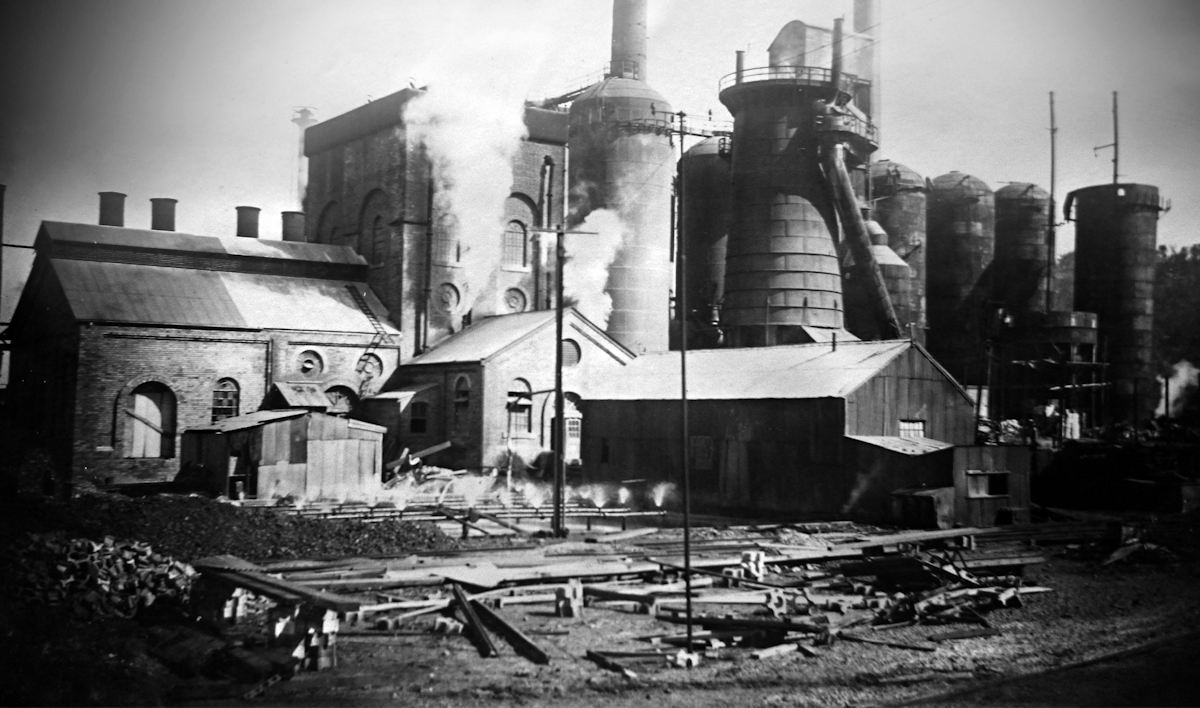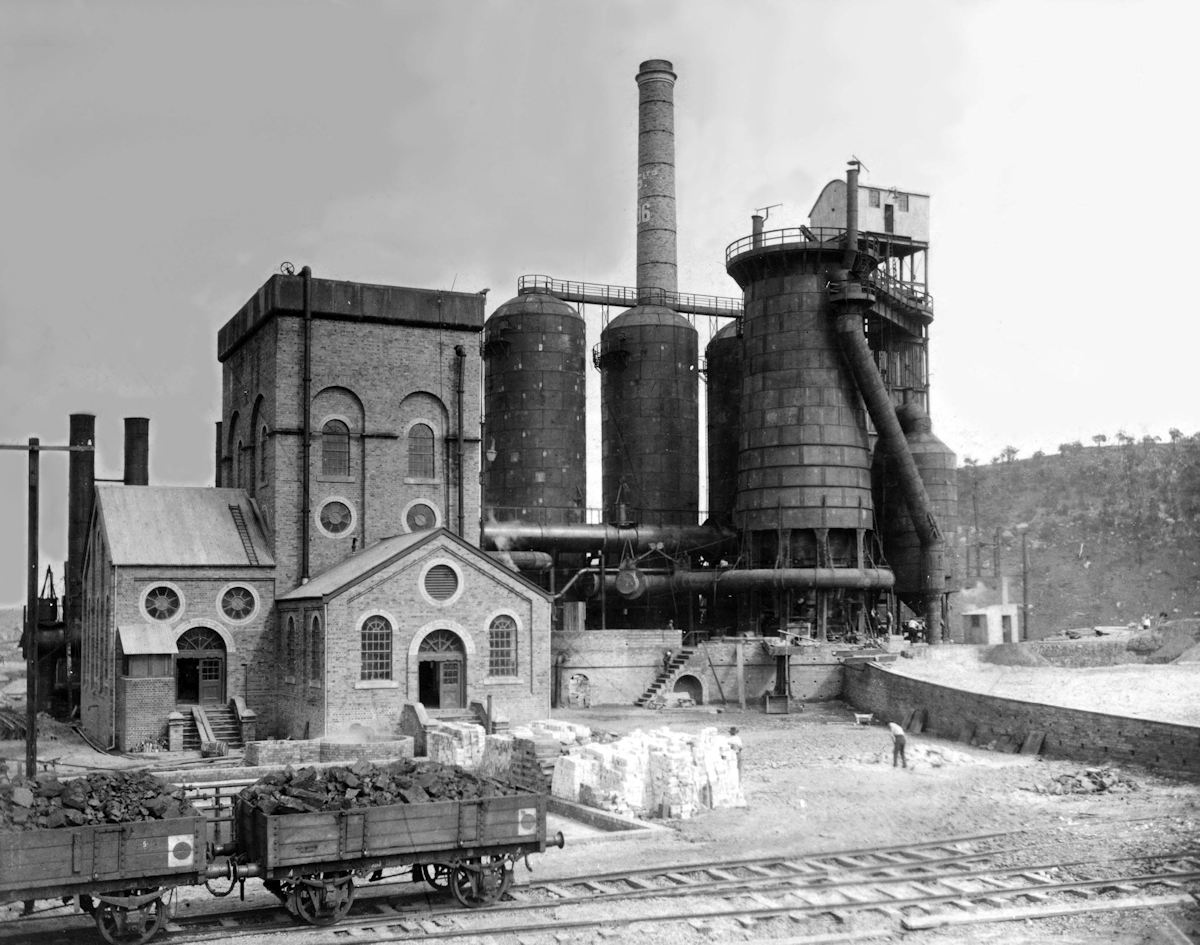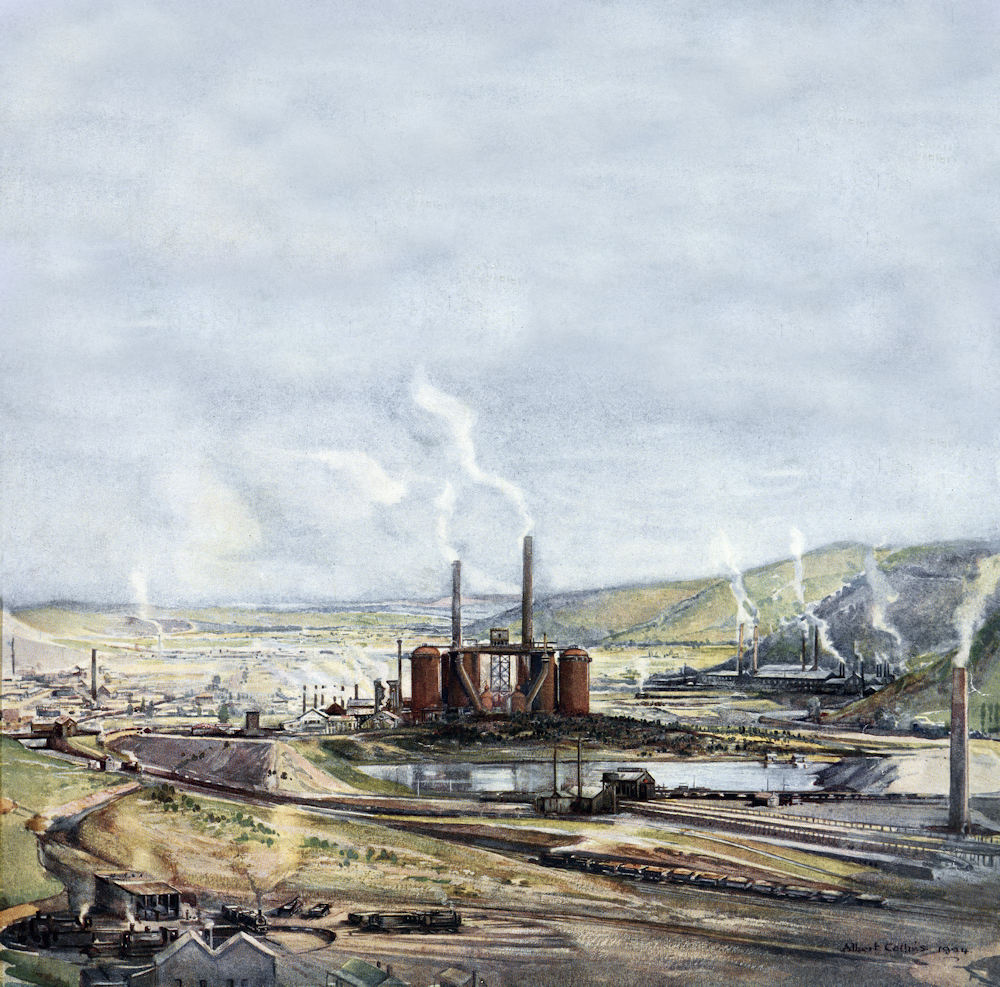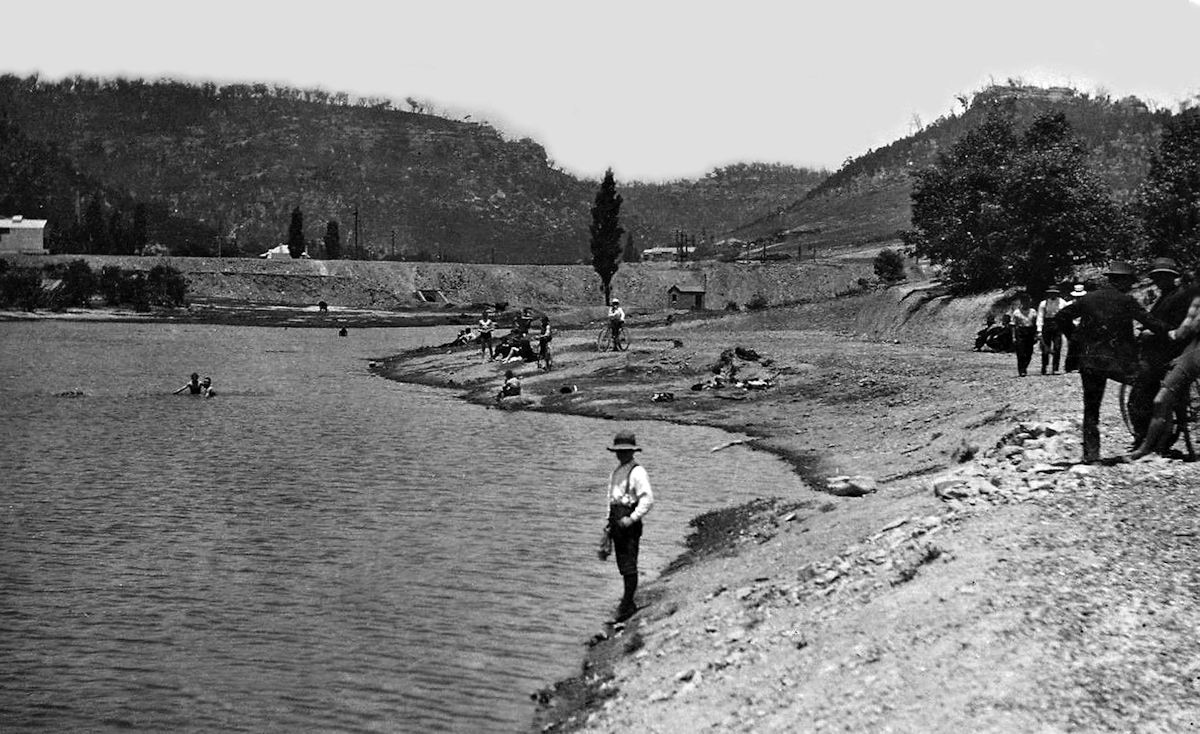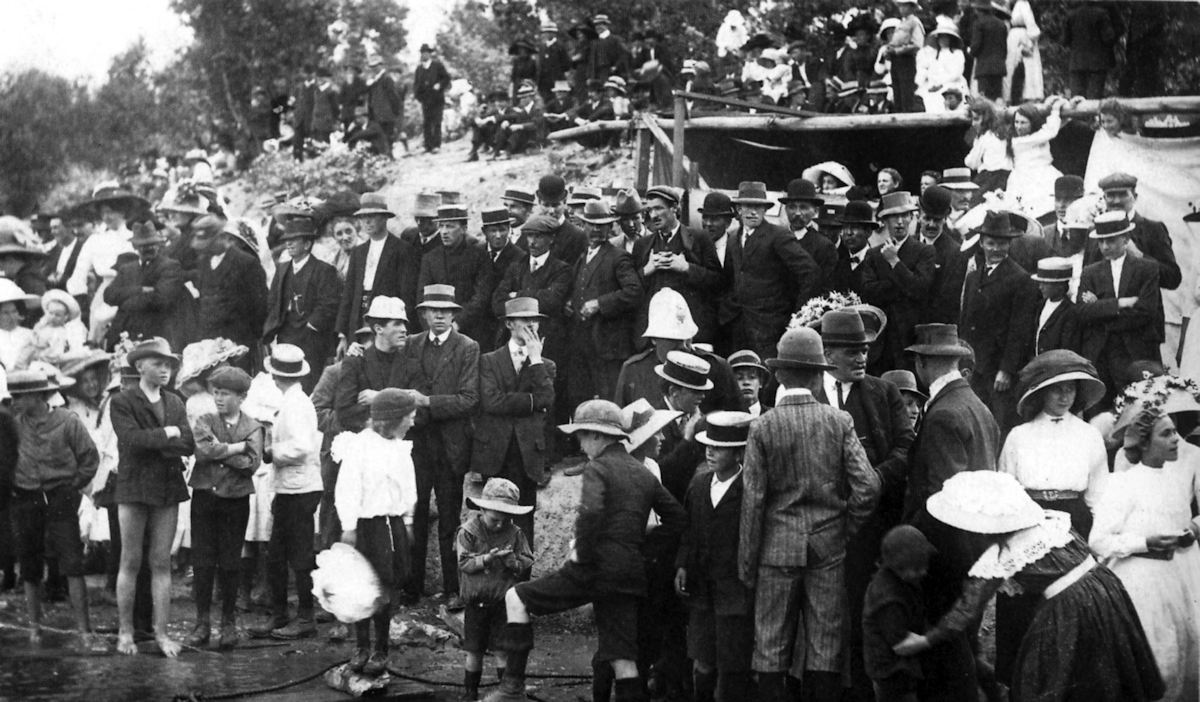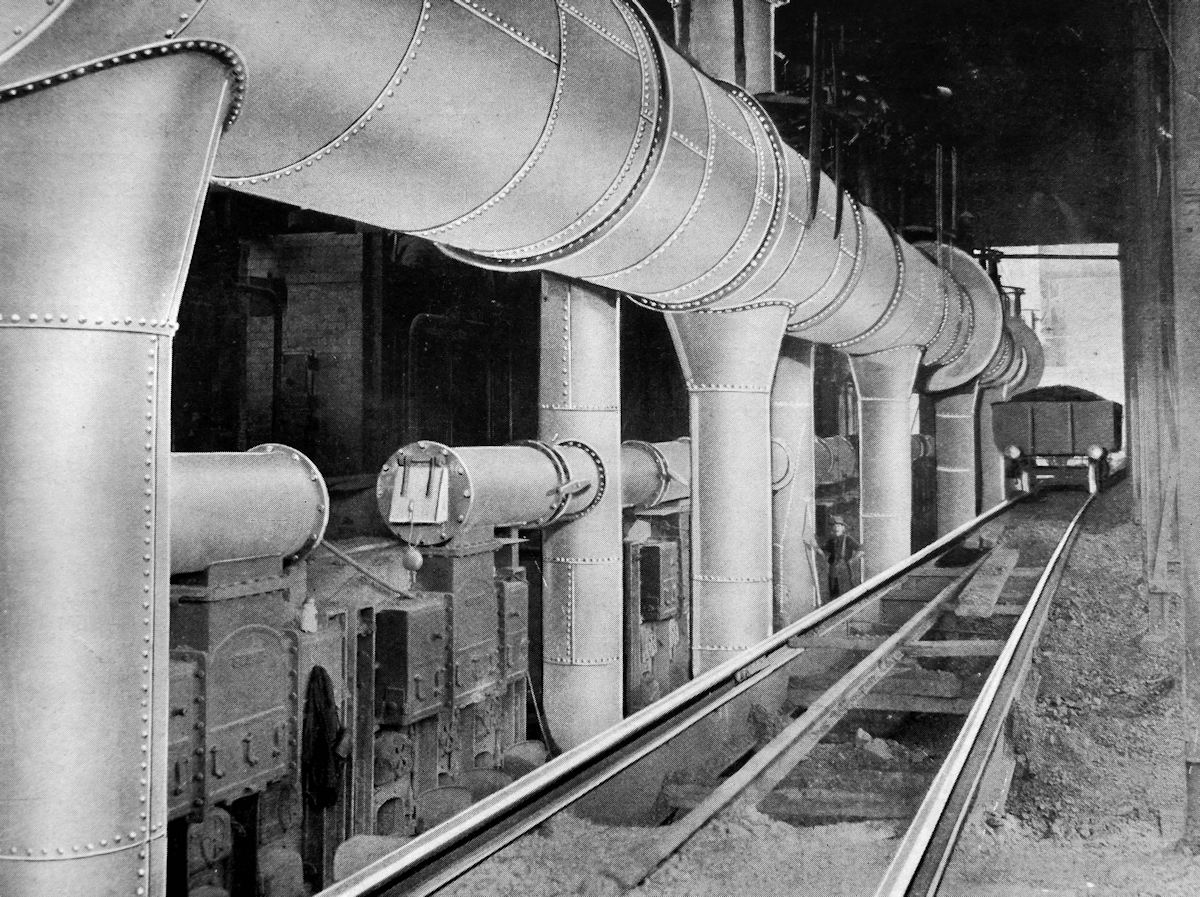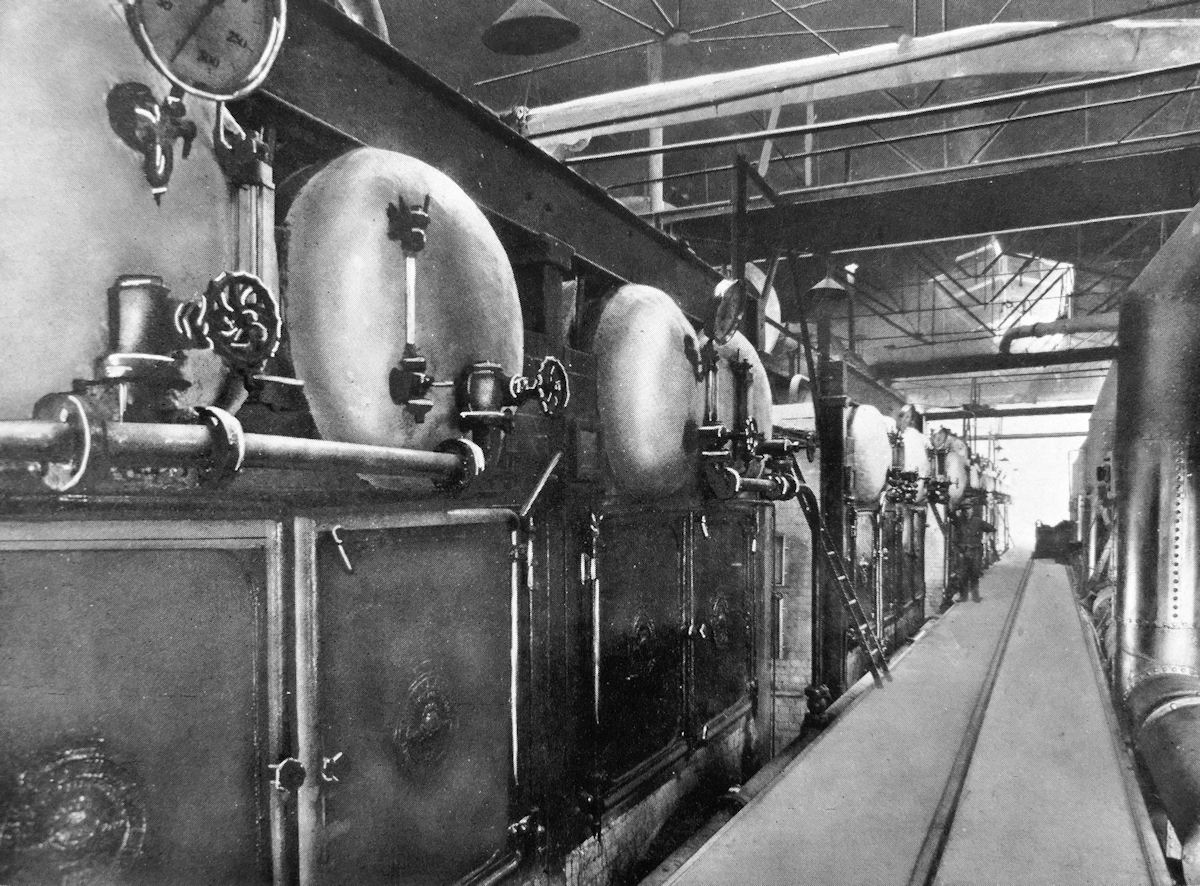
Cooling Pond
The depression outside the windows to the right was a cooling pond used to condense steam from the boilers for recycling to Lake Pillans. The pond had a capacity of 76,000 litres. A grid of feedwater pipes sprayed jets of water into the pond, which has left traces on the brick walls.
Well
The circular brick well below dates from 1906. It served as a collection point for the water supply to the boilers from the cooling pond.
Pump House
You are viewing the foundations of the building which housed the water pumps that supplied the boilers and circulated cooling water. The pump foundations are defined by concrete and a brick substructure while the remains of brick steps extend to the east. The profile of the pump house roof can be seen against the wall of the engine room as white paintwork and flashing.
26 April 1913. This photograph clearly shows the cooling pond in the foreground. Blast furnace No.2 is under construction to the right of
blast furnace No.1 and there has been further development of the engine houses to the left. Charles Hoskins journal
12 March 1907. This early photograph shows the pump house in front of the Davy engine house and to the left of the steps is the well. The cooling ponds are obscured by the rail trucks. The State Library of NSW

Little Coogee
Lake Pillans was created in 1911 when Charles Hoskins erected a weir across Vale Creek. It was intended to provide water for cooling at the blast furnace but also became a popular swimming and boating venue. Its appeal was boosted by the hot water returning from the engine houses at the furnace. After the blast furnace closed locals continued to swim in the lake and its northwest corner became
known locally as ‘Little Coogee’. It was, however, heavily contaminated with heavy metals from the dumping of slag and waste material from the smelters.
Swimming carnivals at Lake Pillans reservoir attracted a good crowd in the 1920s. Charles Hoskins facing the camera lower right.
Aussie Mobs
Rehabilitation
Since 1994, the Lithgow community has rehabilitated the site, covering contaminated areas with a layer of clean clay. The reed beds work as nutrient filters to keep the lake waters clean and safe for community recreation.

Wagon loads of coal for the boilers were run into the boiler house. The large pipe conveyed gas from the blast furnace and the smaller pipes conveyed gas into the boilers.
G&C Hoskins Ltd, The Blue Book, 1915
Gas main
The gas main passed this point on its way from the blast furnaces. It carried flammable gases, created as a by-product of smelting, which were used as fuel in other parts of the operation, such as the stoves.
The hot blast pipe carried high pressure air and steam from the boilers to the blowing engines. The main pipe was riveted steel plate, 1.8 metres in diameter and elevated 4 metres above the ground
Boiler House
To the west of the engine houses are the sparse remains of the simple shed that housed the boilers. These include the tram rails that served as corner posts for the boiler house and iron bolts that once held down the metal chimneys.
The coal-fired boilers supplied steam to the blast furnaces and blowing engines. They were made by the British firm of Babcock and Wilcox and were mounted in pairs (five banks of two). They had twin chimney stacks of brick lined steel.
Babcock & Wilcox boilers at the blast furnace c1925 Hoskins Iron and Steel Co Ltd, The Black Book, 1925

